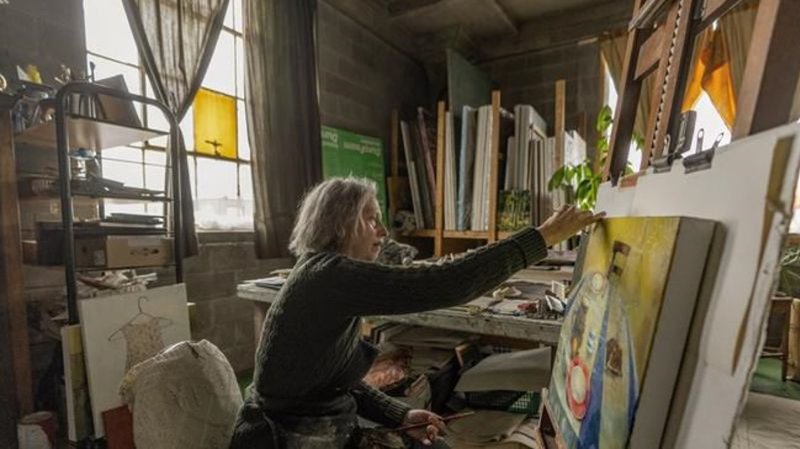Foster said that when she moved into the building, the surrounding area was pretty much abandoned “and kind of a scary neighbourhood.” But by around 2021 it had gentrified, leading the building’s owner to decide to redevelop it and move out artists like Foster, who still pays less than $1,000 in monthly rent.
It’s a scenario that’s all too common, says the head of a group that represents visual artists in the province.
“What we already know is that the situation of artists is more and more precarious,” said Camille Cazin, president of the Regroupement des artistes en arts visuels du Québec. She said the group recently launched a survey to determine the extent of the impact of rising rents and living costs on artists, and received 450 responses on the first day.
Like Foster, many artists establish themselves in urban areas with the cheapest price per square foot of space. But over time, artists’ presence in formerly economically depressed areas such as Montreal’s St-Henri or Mile End made the districts more desirable, leading to price hikes.
“That’s unfortunately the problem with artist workshops: artists are attracted by low prices, and real estate investors are attracted by artists,” Cazin said.
Several artists told The Canadian Press they’ve had to change studios multiple times, or haven’t found anything affordable at all.
André Laplante, a painter and graphic artist, said he was forced a few years ago to move from a studio he was renting with other artists after some of them couldn’t pay their share. He said the precarity of artists is amplified by what he calls the “double rent” phenomenon.
“We pay one rent to live somewhere, and we have to pay another rent to have an artistic practice that often brings in nothing financially, or very little,” he said in a phone interview.
Aida Vosoughi, a painter and visual artist, said she had to leave her former studio after a grant wasn’t renewed. Vosoughi, who is now working in a smaller space linked to Université du Québec à Montréal, said that most aid is only for a year at a time, meaning “there’s always a worry for next year.”
Foster said that she briefly looked at other spaces to rent while facing eviction and was “appalled” — not only by the prices, but by the idea of having to leave a community that she’s deeply ingrained in.
“I’m 65, will be 66 in April. So I have plenty more to say and do in this lifetime and I want to make damn sure that I remain in this place that I love,” said Foster, who is co-founder of a group that recently succeeded in getting a vacant lot transformed into a park.
The City of Montreal says it recognizes the problem and is working to help secure affordable space for visual artists, including through a program that subsidizes their rents. Last year more than 400 artists used the program, which subsidizes $13 per square metre for creative spaces and $3 per square metre for storage, according to Ericka Alneus, the city executive committee member responsible for arts and culture.
The province’s Culture Department and the city have also teamed up on a $30-million program to pay to renovate buildings that house artist studios — often owned by artist collectives or non-profits that have banded together to buy them, Alneus said.
One of those projects is Ateliers 3333, which was created by renowned painter and novelist Marc Séguin after he and other artists were evicted from the building housing their studios. In response, he partnered with a real estate company and a social development company to purchase a former industrial building in the city’s St-Michel district, and renovate it with a $5-million grant from the fund.
Today, it is a workspace for dozens of artists who pay reasonable rents, according to Stéphane Ricci, vice-president of development for la Société de développement Angus, which is one of the project’s partners. The building is managed as a non-profit.
“I think it’s a model that’s very interesting because it allows artists to have a certain stability,” he said.
However, there are also challenges, including needing capital and know-how; having to contend with rising interest rates, construction costs and taxes; and covering expenses while charging low rents artists can afford.
Nevertheless, he considers it a success. “We have about 130, 140 artists who are set up there and will never be evicted by the owner because they’ve found someone willing to pay more,” he said.
This report by The Canadian Press was first published Feb. 11, 2024.
Morgan Lowrie, The Canadian Press

